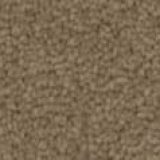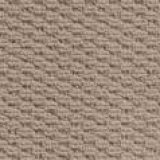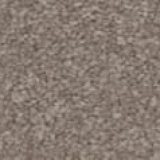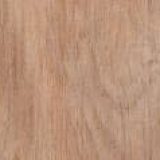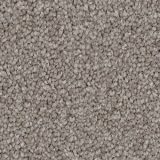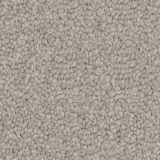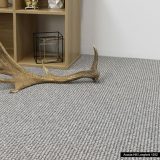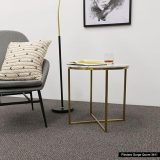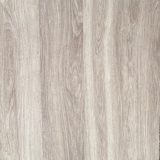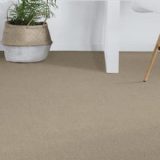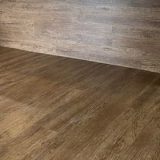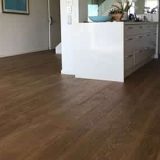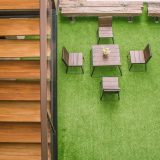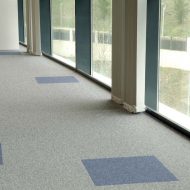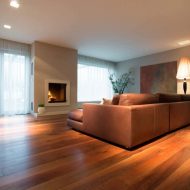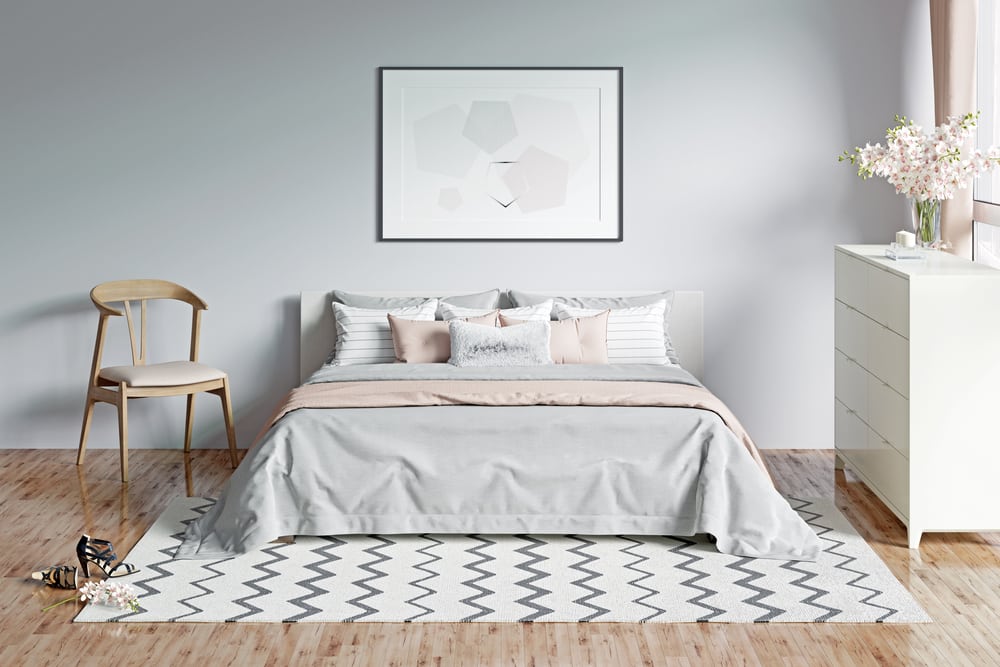Are you unsure whether you should choose vinyl or laminate for your commercial floors? Both are cost-effective alternatives to real timber or stone. However, there are a few subtle differences. This guide will take you through the pros and cons of vinyl vs laminate flooring, and offer tips on how to choose the right floor and style to create your ideal result.
Laminate vs Vinyl Flooring
Many people don’t understand the difference between laminate and vinyl flooring. The crucial difference lies in the composition.
Vinyl Flooring
Vinyl is 100% synthetic. Each vinyl floor consists of the following:
- A base layer of fibreglass, coated in PVC vinyl
- A middle layer of vinyl foam
- A plasticiser to make the vinyl flooring more flexible
- A tough wear layer, such as no-wax polyurethane, to strengthen the vinyl
- Fungicide to prevent mould
- UV stabilisers to protect the floor from fading
- A paper or felt backing made from wood pulp or calcium carbonate
During the design phase, the middle vinyl foam layer is printed and embossed with a surface print layer to create a decorative pattern. Then, a second protective layer is applied.
Vinyl comes in glue-down, loose-fit, and interlocking styles — the latter of which joins together like laminate flooring planks.
Laminate Flooring
Laminate flooring is made of high-density fibreboard, covered in a hard plastic laminate coating. The core layer of fibreboard is crafted from timber byproducts, bonded together with melamine resins.
Laminate vs Vinyl: Aesthetics and Practicality
Like laminate flooring, vinyl flooring comes in designs that closely imitate the aesthetic of natural timber or stone.
Laminate flooring is typically thicker than vinyl flooring. While vinyl flooring ranges from 1.5 mm to 5mm thick, laminate planks are typically between 6mm to 12mm in thickness.
Vinyl Flooring Pros and Cons
Vinyl Floor Pros
- 100% water resistant and ideal for higher-moisture areas
- Commercial grade wear layers that can withstand heavy foot traffic
- Durable
- Low maintenance and easy to clean
- Can be used on any flat subfloor, including cement, granite, tile or laminate
- Affordable
- Ideal for use in bathrooms
Vinyl Floor Cons
- Vinyl is thinner than laminate
- Can be difficult to remove if glued down
- Can be punctured with very sharp objects
- Can show fading and discolouration with excessive UV exposure
- Softer material than most laminates, hardwoods and tiles
- Not biodegradable and can be difficult to recycle
Laminate Flooring Pros and Cons
Laminate Floor Pros
- Higher resale value
- Resists scratches, dents and stains
- Easy to clean
- Comfortable to walk on due to its inherent thickness and warmth
- Easy and fast installation
- Resists fading
- Can be installed in semi-moist areas like powder rooms and kitchens
Laminate Floor Cons
- Not waterproof
- Susceptible to warping or staining from standing water
- Louder to walk on than vinyl
Understand your Interior Design Goals
Once you decide on vinyl vs laminate for your commercial space, you will next need to define your design goals. Both vinyl and laminate can be crafted to look like other natural materials, such as timber or stone.
In recent years, manufacturers of luxury vinyl greatly improved the aesthetic look and feel of their products. However, incorrect installation can compromise this. To ensure the most professional result, it’s important to hire a carpet specialist who understands how to install the flooring to achieve the most natural-looking result.
Wood Look Vinyl Flooring
Wood look vinyl flooring and laminate flooring are ideal for commercial spaces where a timber look is desirable. Wood look linoleum is an affordable alternative to real timber, exuding the warmth and character of timber, without the price tag of real wood.
The appearance of wood grain vinyl flooring can be designed to mimic the striking appearance of Australian timbers, such as spotted gum vinyl flooring. Laminate flooring that looks like wood also comes in a range of sophisticated finishes that look like planks from Australian timber species. This cosy character makes it ideal for commercial projects such as education and childcare, aged care, hospitality and upscale restaurants.
The durability of wood effect laminate flooring and wood like vinyl flooring make them an excellent option for busy commercial spaces looking for toughness. When selecting between the two, consider whether it’s more important to choose a floor that demonstrates high water resistance (for example, if the flooring is intended for a bathroom), or one that resists scratches, dents and stains (a kitchen or office space). Both laminate and vinyl can withstand heavy foot traffic.
Stone Look Vinyl Plank Flooring
Stone look vinyl flooring and laminate flooring can mimic the look of any stone material, from slate to marble, travertine and tile. Because of their versatility and durability, they can be a great choice for a variety of different businesses.
Stylish corporate offices look amazing with travertine vinyl plank flooring, black slate vinyl flooring or marble look vinyl, while faux slate vinyl flooring will suit more utilitarian spaces such as airports, sports gyms and warehouses. Slate look vinyl flooring is ideal to enhance the spacious feel of public spaces such as walkways, while vinyl marble flooring adds a touch of elegance and luxury to hospitality businesses such as hotels and retail businesses. If you are seeking a bathroom floor, vinyl flooring that looks like tile is one of the best choices, as this combines the aesthetics of traditional bathroom tiles with the superior waterproofing of vinyl.
Is your business looking to install a new vinyl or laminate floor? For all your commercial flooring needs, get in touch with the experts at Bennetts Carpets today on 1300 653 314.




